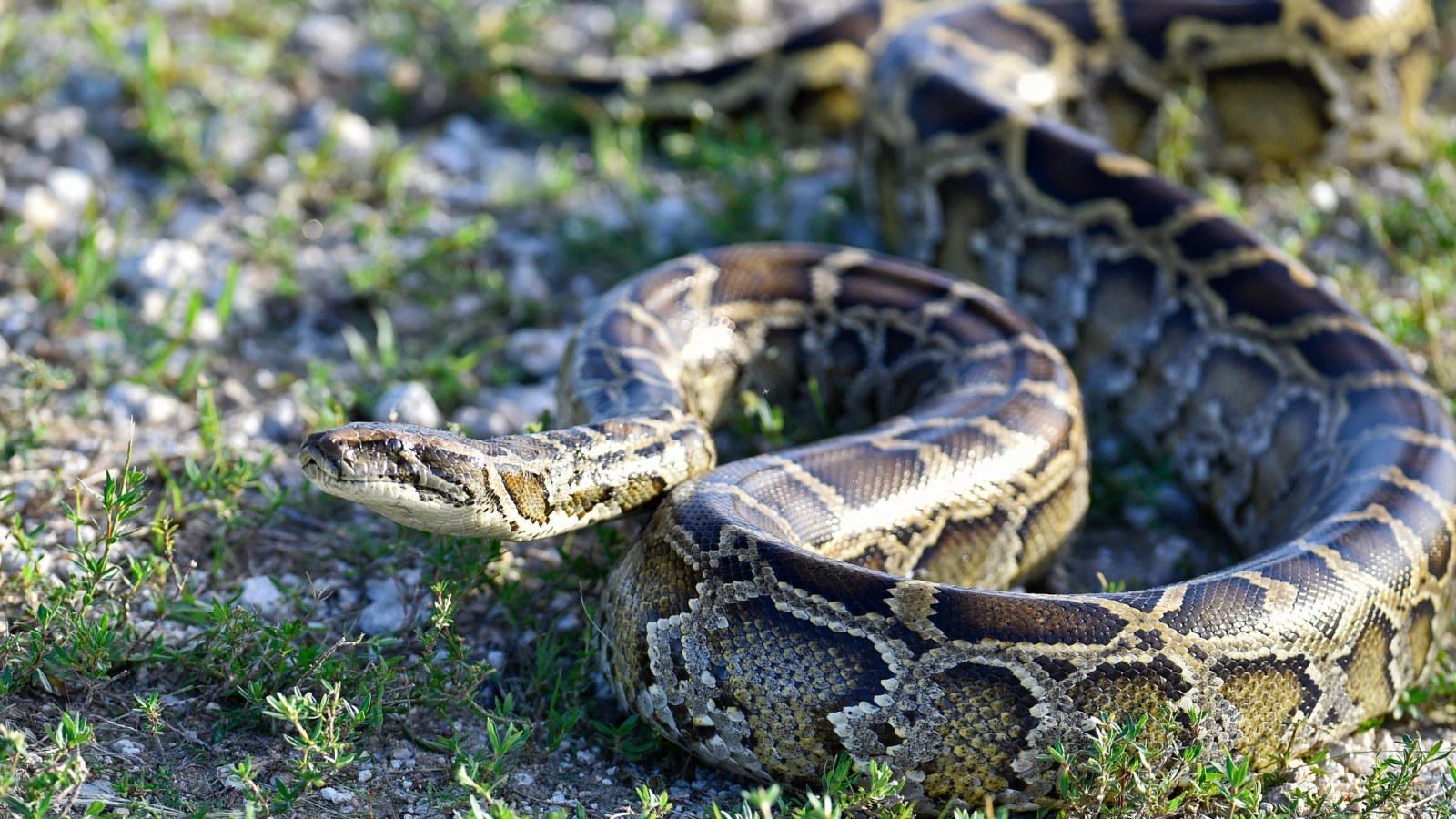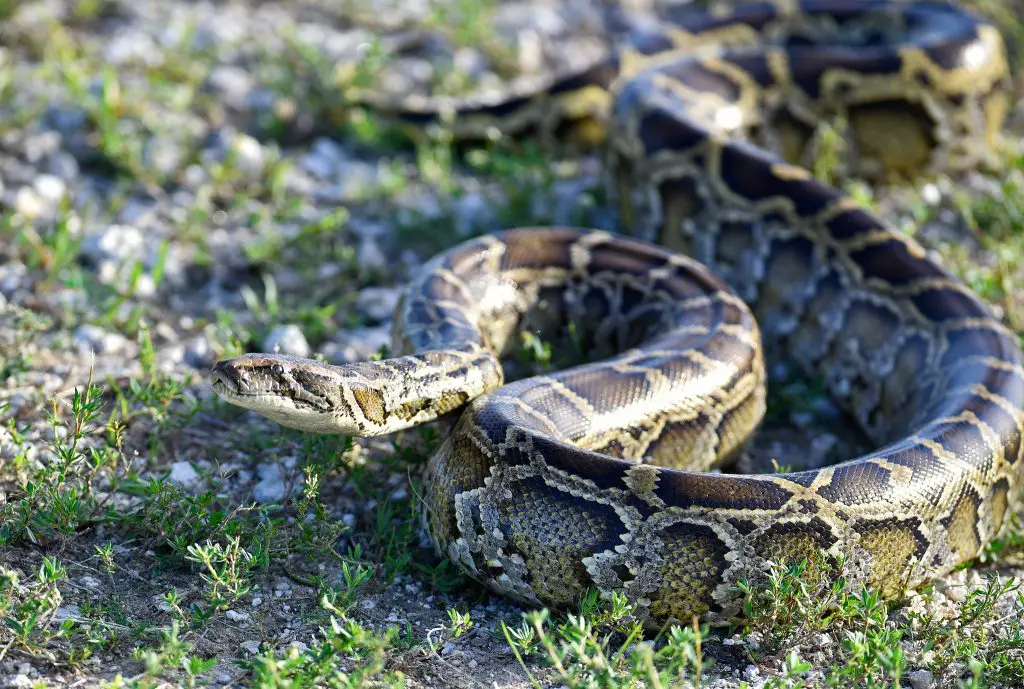The Burmese python, an invasive species from Southeast Asia, is wreaking havoc on the Everglades ecosystem in Florida. These massive snakes have no natural predators and can grow up to 20 feet long, causing a significant threat to the native wildlife and delicate balance of the ecosystem.
Since their introduction to the Everglades in the 1980s, the Burmese python population has exploded, with estimates ranging from tens of thousands to over 100,000 individuals. Their impact on the ecosystem is staggering, and scientists are working to understand the full extent of the damage caused by these invasive predators.

The Burmese Python and its Impact on the Everglades Ecosystem
Introduction
The Burmese python, scientifically known as Python bivittatus, is a non-native species that has been causing significant ecological damage to the Everglades ecosystem. These snakes are native to Southeast Asia and were brought to Florida as pets in the 1980s. However, due to their ability to reproduce quickly and lack of natural predators, they have become an invasive species in the Everglades.
The Problem
The Burmese python is a top predator in the Everglades, feeding on a variety of prey, including birds, mammals, and reptiles. The problem is that they have no natural predators in the area, which has allowed them to reproduce and thrive in the ecosystem. The snakes are also known to eat endangered species, such as the Key Largo woodrat and the wood stork.
The Impact
The presence of the Burmese python in the Everglades ecosystem has had a significant impact on the food web. The snakes have caused a decline in the population of small mammals, such as raccoons and opossums, which are important prey for other predators in the area. This has had a ripple effect on the entire ecosystem, leading to a decrease in biodiversity.
Reproduction
Burmese pythons are known for their ability to reproduce quickly, which has contributed to their invasive status in the Everglades. Female pythons can lay up to 100 eggs at a time, which hatch in approximately two months. The hatchlings are approximately two feet long and grow quickly, reaching adult size within three to five years.
Methods of Control
Efforts to control the Burmese python population in the Everglades include hunting and trapping. The state of Florida has implemented a Python Removal Program, which pays hunters to capture and remove the snakes from the ecosystem. Another method is the use of radio telemetry, in which scientists track the movement of the snakes to better understand their behavior and habitat preferences.
Benefits of Control
Controlling the Burmese python population in the Everglades would have numerous benefits for the ecosystem. It would help to restore the natural balance of the food web, allowing other predators to thrive. It would also protect endangered species from predation and increase the overall biodiversity of the area.
Conclusion
The Burmese python is a significant threat to the Everglades ecosystem, causing ecological damage through its rapid reproduction and lack of natural predators. Efforts to control the population are ongoing, and it is important to continue these efforts to protect the biodiversity of the area.
Frequently Asked Questions
Invasive species can wreak havoc on ecosystems, and the Burmese Python is no exception. This species was introduced to the Everglades and has caused significant damage to the native flora and fauna. Here are some frequently asked questions about the Burmese Python and its impact on the Everglades.
What is a Burmese Python?
The Burmese Python is a large constrictor snake native to Southeast Asia. It is one of the largest snakes in the world and can grow up to 23 feet long. They are typically found in forests, grasslands, and swamps, but have been introduced to the Everglades in Florida.
Unfortunately, the Burmese Python has no natural predators in the Everglades, which has allowed its population to grow unchecked. They are now considered an invasive species and have caused significant damage to the ecosystem.
How did the Burmese Python get to the Everglades?
Burmese Pythons were first introduced to the Everglades in the 1980s, likely as a result of pet owners releasing them into the wild. The Burmese Python is a popular pet snake due to its size and docile nature, but they require a lot of space and can be difficult to care for.
When pet owners can no longer care for their snakes, they may release them into the wild. Unfortunately, this has led to the establishment of a breeding population of Burmese Pythons in the Everglades.
What impact has the Burmese Python had on the Everglades?
The Burmese Python has had a significant impact on the Everglades ecosystem. They are voracious predators and have been known to eat a wide range of native species, including birds, mammals, and even alligators. They also compete with native predators like bobcats and panthers for food.
The impact of the Burmese Python on the ecosystem is still being studied, but it is clear that their presence has caused significant damage. The loss of native species can have a ripple effect throughout the ecosystem, affecting everything from the food chain to the nutrient cycle.
What is being done to control the Burmese Python population?
Efforts to control the Burmese Python population in the Everglades are ongoing. One method is to encourage people not to release pet snakes into the wild. The state of Florida has also implemented a bounty program, which pays hunters to capture and kill Burmese Pythons.
Researchers are also studying the biology and behavior of the Burmese Python in order to develop more effective control methods. However, the sheer size of the Everglades and the elusive nature of the snakes make it a difficult problem to solve.
Can the damage caused by the Burmese Python be reversed?
It is unclear if the damage caused by the Burmese Python in the Everglades can be fully reversed. However, efforts to control the population and restore native species can help to mitigate the damage. It is important to act quickly and decisively to prevent the Burmese Python from causing further harm to the ecosystem.
Restoration efforts may also involve the reintroduction of native species that have been impacted by the Burmese Python. It will be a long and difficult process, but it is possible to restore balance to the Everglades ecosystem.
How The Burmese Python Affects Florida’s Ecological System | Austin Stevens Adventures | Real Wild
In conclusion, the introduction of Burmese pythons to the Everglades has had a devastating impact on the ecosystem. These snakes have no natural predators in this environment, allowing their population to grow unchecked. They have preyed upon native species, leading to a decline in their numbers and causing a chain reaction of negative effects throughout the food chain.
Efforts have been made to control the python population, including the establishment of hunting programs and the use of detection dogs to locate and remove these invasive snakes. However, the battle to restore balance to the Everglades ecosystem is ongoing.
It is crucial that we continue to monitor the impact of these snakes and take action to prevent further destruction of this unique and precious ecosystem. The Burmese python serves as a reminder of the importance of responsible stewardship of our natural resources and the need to be vigilant in protecting our planet’s delicate balance.


